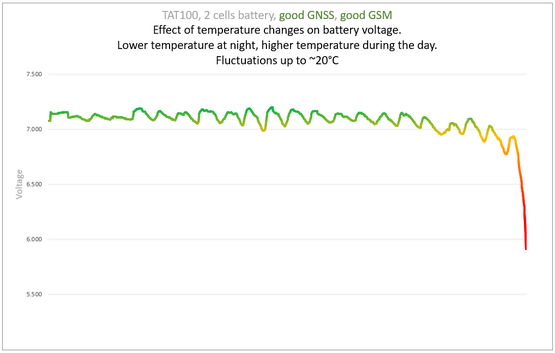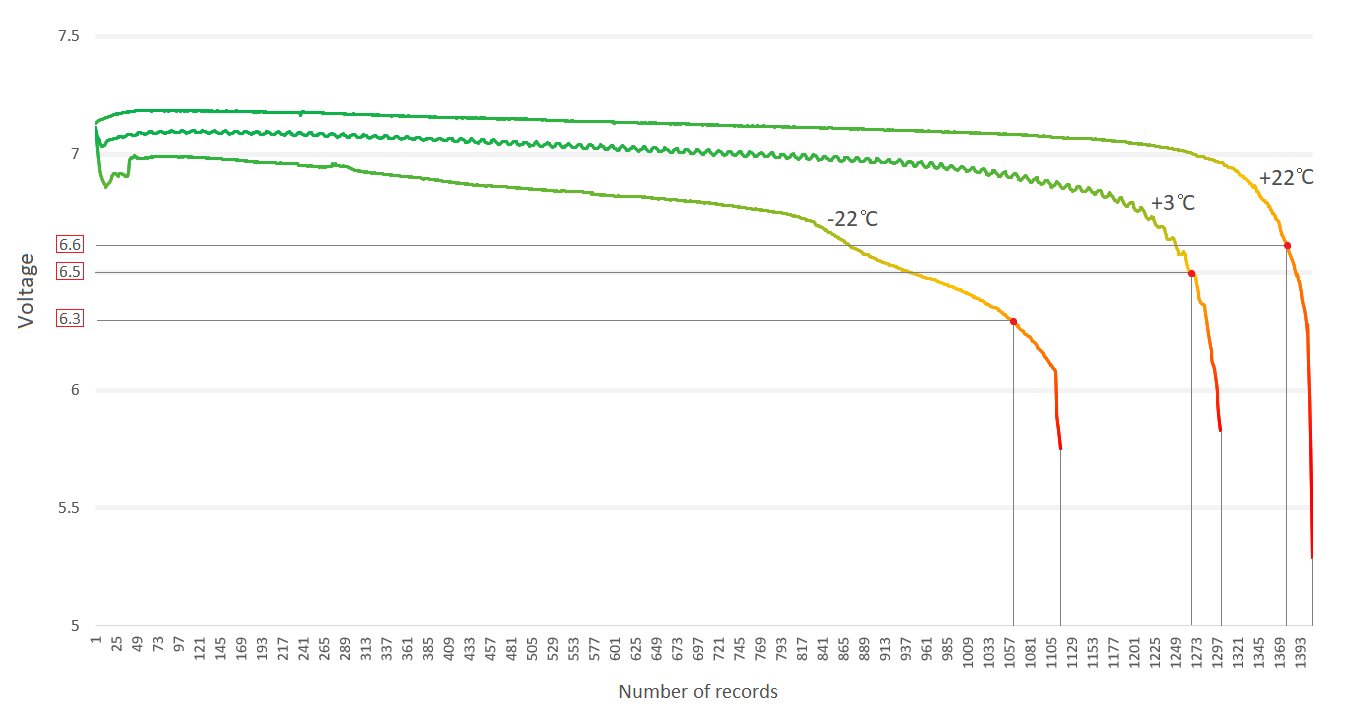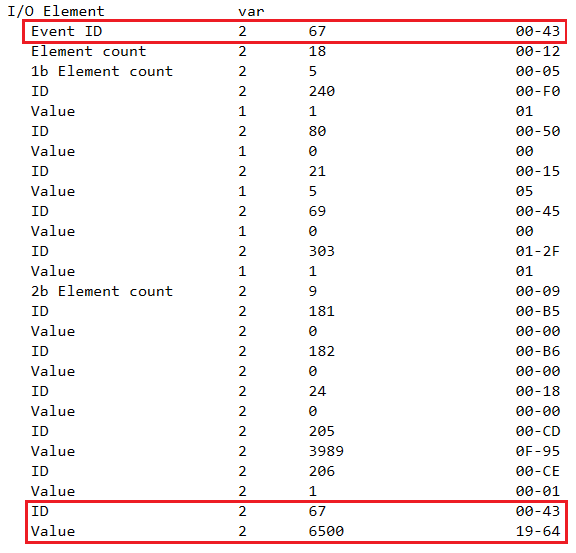TAT100 Battery Discharge Characteristics
Battery Discharge Characteristics
In order to help our clients estimate the approximate battery life of their TATXYZ Trackers, we have compiled a comprehensive collection of battery discharge curves under various conditions. This wiki page serves as a valuable resource for understanding how different factors can affect the longevity of the tracker's battery, allowing users to make informed decisions and optimize their device's performance. Battery life is a crucial aspect of any tracking device, and accurately predicting its duration is essential for planning deployments, managing operations, and ensuring uninterrupted tracking capabilities. By providing battery discharge curves, we empower our clients to evaluate the performance of the TATXYZ Trackers in different scenarios and tailor their usage accordingly. Please note that while these battery discharge curves provide estimations, actual battery life may vary based on individual usage patterns, environmental factors, and other variables. Therefore, it is always recommended to conduct real-world tests to validate the expected battery performance.
The charts below show how the TAT100 battery discharges in different environments. All provided information is based on real field tests.




Just like how the weather affects our mood, temperature also changes battery voltage. When it's cold, the voltage goes down, and when it's warm, the voltage goes up. This is something to remember when using batteries in different situations.
Here is an example of the device being used outdoors, with lower temperatures at night and higher temperatures during the day.

Low Battery Indication
Temperature Impact on Low Voltage
Battery replacement could be scheduled based on the received battery voltage values in the records. Here are recommendations for replacing the battery before it completely discharges. In the picture below, there are three curves depicting the battery voltage in different temperature environments. Each curve exhibits distinct properties; as observed from the graph, in higher temperatures, the battery discharges more rapidly towards the end, but the device is capable of sending more records. The curve for lower temperatures maintains a more consistent decline before a sudden drop.

We advise against waiting until the device is fully depleted and suggest scheduling a battery replacement in advance. Based on the depicted curves, we recommend initiating device servicing when the following battery voltage values are received in your server:
- Warm environment (+22°C) : <6.6 V
- Cold environment (+3°C) : <6.5 V
- Very cold environment (-22°C) : <6.3 V
| Please note: These are examples and recommendations of the low battery alarm concept only. |
Low Voltage Record
To identify and get a dedicated record telling that the voltage threshold has been exceeded, follow below instructions.
Firstly, it is important to mention that the device will not wake up from sleep to send that kind of record, because it cannot measure the battery voltage in sleep mode. Instead, such an event can be easily received as a separate record when the device wakes up to send periodic or scheduled records, so it is possible to recognize such records as a low battery alert on the server side.
Steps to configure such event record:
1. Connect the device to configurator and navigate to I/O settings tab.
2. Find Battery Voltage I/O element.
3. Switch Priority to Low.
4. Set the Min and Max ranges to 0 - 6600 (event will be generated once battery voltage falls below 6.6 V).
5. Select On Entrance operand.
6. Event Only - No (battery voltage information will be included in periodic records).

7. Save the configuration to the device.
Above can also be configured by sending an SMS/GPRS command to a device that has already been deployed in the field.
setparam 50120:1;50123:0;50122:6600;50124:1;50121:1
| Please note: Device will only receive SMS/GPRS command when it wakes up for periodic or scheduled record. |
Every time device wakes up to send a new record battery voltage is measured. If the battery voltage is lower than configured threshold (6.6 V in this example), an Event Record will be generated and sent to the server. This record will have event number "67" indicating low voltage.
Example record content:
00000000000000808E010000018ED1BDD9C0000F0E97C1209AC7410000000000000000430012000500F001005000001505004500012F01000900B5000000B600000018000000
CD0F9500CE000100431964001100000012000000130000000100F10000601A0003000B000000003544C87E61B700000000000000F3000E0000000041A1F7670000010000044E
Data parsed:

In above example Event ID is 67 (corresponds to AVL for Battery Voltage).
Value of AVL 67 is 6500 (6.5 V) that is lower than configured 6600 (6.6 V). Operand condition was met and eventual record was generated.
Li-SOCl2 Batteries and passivation effects
1. Introduction to Li-SOCl2 Batteries
Lithium-Thionyl Chloride (Li-SOCl2) batteries are widely used in IoT applications due to their high energy density, long shelf life, and ability to operate in extreme temperatures. Their stable output voltage makes them ideal for long-term deployments in remote or low-maintenance devices like smart meters, industrial sensors, and tracking systems.
2. Understanding Passivation: Pros & Cons
One characteristic of Li-SOCl2 batteries is passivation, where a thin lithium chloride (LiCl) layer forms on the lithium anode.
Benefits of Passivation:
- Reduces self-discharge, ensuring long-term energy retention.
- Extends shelf life, making these batteries reliable for long storage periods.
Drawbacks of Passivation:
- Can cause voltage delay when the battery is first used after storage.
- High initial resistance may result in a temporary voltage drop, especially in high-drain applications.
3. Issues After Long Storage & Voltage Drop
If a Li-SOCl2 battery has been stored for an extended period, the passivation layer can become thicker, leading to:
- Lower initial output voltage when first used.
- A brief period where the device may not receive full power.
In IoT applications, this means sensors or communication modules might experience startup issues after long inactivity.
4. What to Do After Long Storage
For devices using these batteries, if a low voltage is detected after a long storage period, a simple solution is to send a record to the server. This brief activity will help break down the passivation layer, and the battery output voltage will automatically rise back to normal within approximately 24 hours.
This approach ensures reliable operation without manual intervention, making Li-SOCl₂ batteries a practical choice for IoT and long-life industrial applications.
